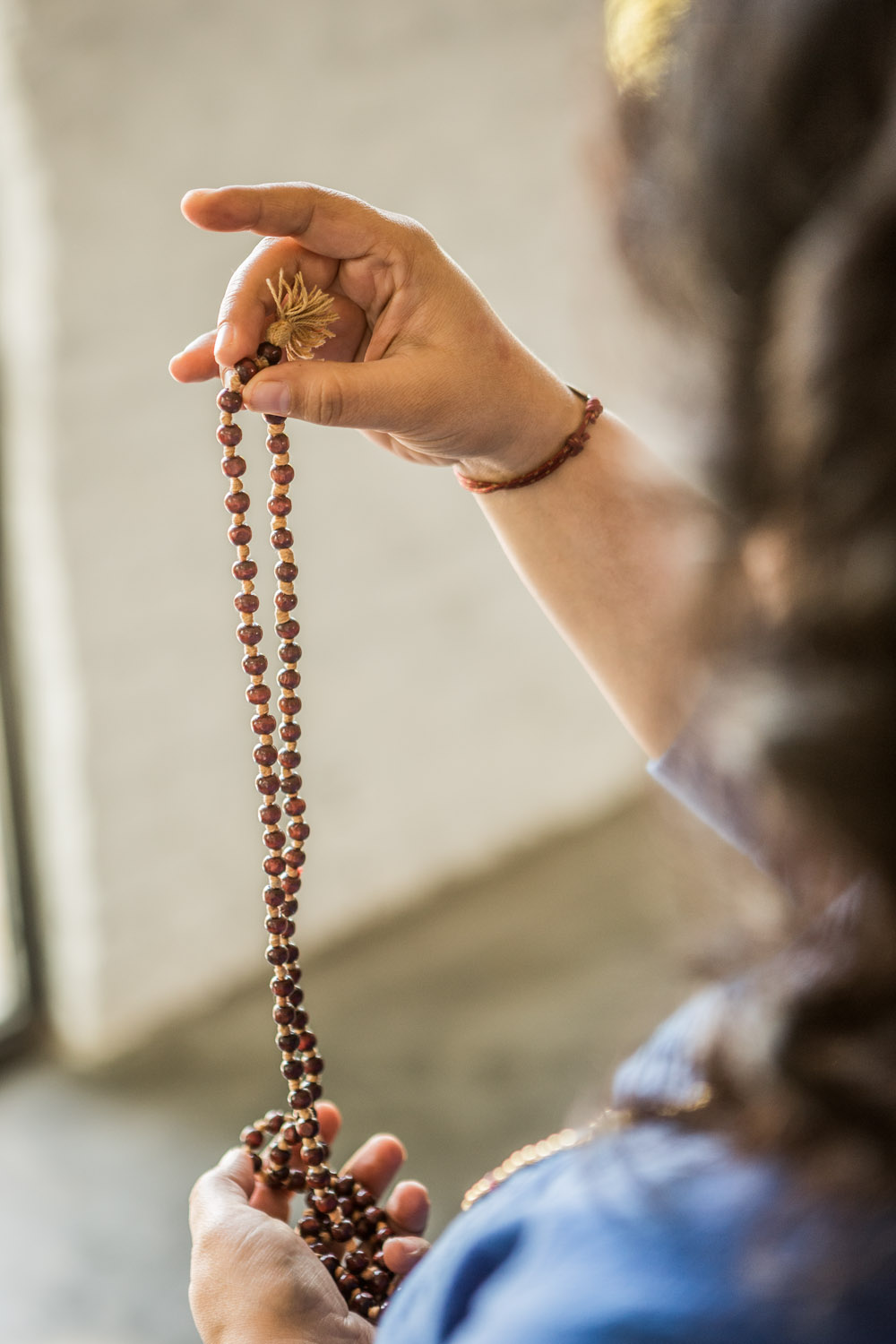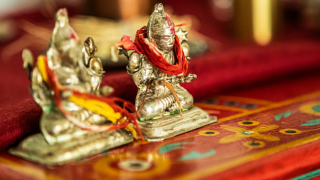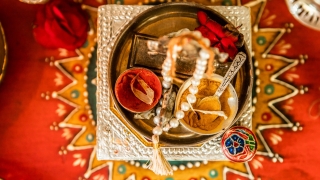First, as just a reminder about what is Japa Mala: The mala used for mantra recitation or chanting is called Japa Mala which usually has 108 beads (could be 11, 21 or 54). The sole purpose of this mala is to create a loop of specific mantra energy within it and locking it in the Sumeru (the first and the bigger bead of the mala). It is typically made of the same stone, seed, wood, root, so all the 108 beads are alike.
Here is a point-by-point definition to Japa malas:
- Meaning of Japa: Japa means the act/karma of constant, continuous and consistent repetition of a mantra .
- Purpose: The sole purpose of this mala is to create a loop of specific mantra energy within it and locking it in the Sumeru (the first and the bigger bead of the mala). Japa is the purification of the thought waves (chitta vritti) and emotional waves (mano vritts) of the mind for the sake of maintain peaceful mind and joyful heart. It is also done for the purpose of the attainting the state of Yoga.
- What is Japa Mala: Japa Mala is a string of beads (semi precious stones, seeds, woods etc.) for the sake of maintaining a discipline of the number of repetitions of a mantra as well as to allow the beads to become a catalyst for the mantrik vibrations to become alive. Various mantras are suggested to have specific mala beads. The Japa Mala is usually has 108 beads (could be 11, 21 or 54).
- Japa Mala and Dosha: For the balance of doshas different Japa Malas along with specific and appropriate mantras are paired. For example:
Vata Pacification: Red Sandalwood, Citrine, Clear Quartz, Moss Agate, Rudraksha, Vaijyanti
Pitta Pacification: Sandalwood, Rose Quartz, Amethyst, Aventurine, Moss Agata, Turquoise, Lotus Seed
Kapha Pacification: Red Sandalwood, Carnelian, Malachite, Rudraksha, Vaijyanti
- Japa Mala and Mantras: Based on the nature of the Mantra (masculine, feminine or neutral) various Japa Malas are used. For example:
Feminine/ Shakta Mantra: Mantra dedicated to Lakshmi, Saraswati, Tripura Devi, Durga etc : Red Sandal wood, Lotus Seed, Rose Quartz and Carnelian
Masculine/Shiva Mantras: Mantras dedicated of Hanuman, Ganesha, Shiva, Krishna etc. : Rudraksha, Sandalwood, Vaijyanti, Tulsi
Neutral Mantras: Mantra associated with universal consciousness like Gayatri Mantra, OM etc : Clear Quartz or Rudraksha
Meaning behind the Japa Mudra (picture below): The Japa Mudra is when we rest the mala on the ring finger (represent earth and so allows for a grounding, restful and nourishing energy). The Mala is rotated using the middle finger (represents ether or space element as consciousness) and thumb (representing fire element for transformation of vikruti into pure state of consciousness). The index finger (representing air, vata and prana is held out stretched, to allow for the inspiration from the cosmic prana and guidance from the Guru lineage). The little finger (representing water and emotions) is kept relaxed for the sentiment of the peace (shanta rasa) as the constant state of mind and the foundation of the practice.

How can you actually use this knowledge? Here is a list of FAQs about malas and practicing with mala:
- How many rounds to practice: As many as you are inspired you with the intention of to complete one which makes it 108 repetitions.
- When to practice: Any time of the day is great but morning and evening hold special value due to the transitional nature of these timings. It allows us to enter the portal of consciousness more easily. Full moon and new moon nights are excellent times for Japa
- Why 108?: I am sharing one of the reasons and there are many. There are 50 syllables in Sanskrit. Syllables in sanskrit are called Matrika, which means little mothers. Each syllable is considered a divine manifestation of the consciousness itself. Each syllable has a masculine and feminine counterpart. In order to invoke all of energies of the 50 syllables in its entirety (irrespective of the syllables of the Mantra) we chant 100 times. The last 8 repetition are an offering directly to the linage of the Guru, wise ones, the diety itself, the Rishi who first could channel/ realize the mantra.
- What is Meru bead: the 109th bead which stands out in a Japa Mala is called Meru or the Guru bead. Think of it a drop of nectar holding the essence of all the number of Japas you might have done till date and also holding the essence of all the 108 Japa beads. It represents our inner Guru, inner anchor and our inner Self.
- Can I wear Japa Mala?: Japa mala can be worn after the Japa to bask in the pleasantness of the mind after the Japa and experience the extended effects of a meditation mind. Japa Mala should be worn touching the skin under the clothes instead of over the clothes. It is considered a very personal and sacred tool for inner transformation. One should avoid wearing Japa Mala in the night time while sleeping and in the public places. One must also avoid wearing them as Jewelry. They carry the jewel of the pure states of mind and must be kept at the altar or a clean place.
Hope this information acts a guideline and serves the purpose of transformation through knowledge.
Get your mala here
WAYS TO PRACTICE
- Listen to the Mantra Album on iTunes or Amazon Music
- Practice the 108 Japa of Gayatri Mantra and MahaMritunjaya Mantra with me.
STAY IN TOUCH
Start your FREE subscription to Indu Arora's newsletter to get more on Yoga and Ayurveda here
Say hello on Instagram
Subscribe to my Youtube Channel.




